
DETAILED REPORT OF GROUP 3 -INTRODUCTION TO PLANT IDENTIFICATION..docx
INTRODUCTION TO PLANT IDENTIFICATION
A detailed report presented to
MRS. JADE E. CALIHAT
School Year 2023-2024
Summer Class
Submitted by:
Group 3- BS BIO Block A
Aguilar, Lawrence Montes
Bendoy, Charie Jean
Hinampas, Michaela Samson
Ramos, Alexa
Sabate, Tsarina
Siguisabal, Carisse Marianne
Singcol, Carlo
TOPIC OUTLINE
Learning Objectives:
5. Appreciate Plant Biodiversity: Gain a deeper appreciation for the diversity of plant life and the importance of accurate identification in botanical studies and conservation efforts.
INTRODUCTION
In this chapter, we delve into the fascinating world of plant identification, a crucial aspect of botany that enables us to classify and understand the immense diversity of plant life. The chapter begins with an exploration of vegetative characters, the fundamental traits of plants that aid in their identification. Understanding these vegetative features is essential as they form the basis for recognizing and distinguishing different plant species.
Next, we will examine the construction and use of identification keys, focusing on two primary types: dichotomous keys and Multi-Entry Key Applications (MEKAs). Dichotomous keys are traditional tools that guide users through a series of choices based on plant characteristics, leading to the correct identification. MEKAs offer a more flexible approach, allowing multiple entry points and thus enhancing the identification process.
Finally, the chapter covers the indispensable resources of floras, manuals, and descriptions. These comprehensive references provide detailed information on plant species, their habitats, and their distinguishing features, serving as essential tools for botanists, horticulturists, and plant enthusiasts alike.
Through this chapter, readers will gain the foundational knowledge and practical skills necessary for effective plant identification, paving the way for further botanical studies and appreciation of plant biodiversity.
VEGETATIVE CHARACTERS
How can we use these characteristics to help us identify plants?
Vegetative characters refer to the non-reproductive parts of a plant, which include leaves, stems, and roots. These characteristics are essential for plant identification because they are often present throughout the year and provide reliable features that can be used to distinguish between different species.
Why do we refer to the non-reproductive parts of the plants?
Referring to the non-reproductive parts of plants—also known as vegetative characters—is important for several reasons:
In summary, focusing on vegetative parts enhances the ability to identify plants reliably and consistently, regardless of the season or reproductive stage of the plant. This makes vegetative characters indispensable in botanical studies, fieldwork, and plant identification guides
Here are some key vegetative characters and how they can help in identifying plants:
 -Plant habit refers to the general growth form or shape of a plant. Here are the main types:
-Plant habit refers to the general growth form or shape of a plant. Here are the main types:

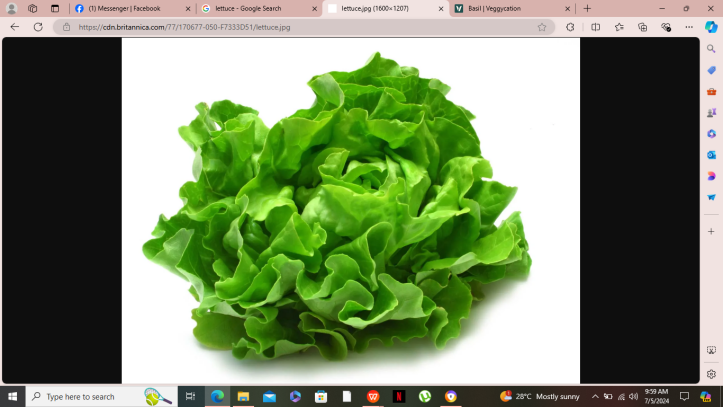 1. Herb: A plant with a non-woody stem that dies back to the ground after each growing season. Examples include basil, lettuce, and daisies.
1. Herb: A plant with a non-woody stem that dies back to the ground after each growing season. Examples include basil, lettuce, and daisies.

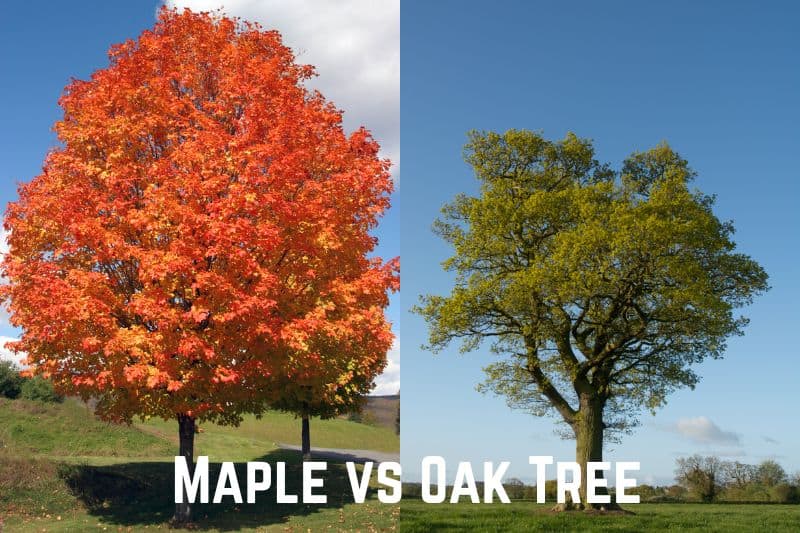
3. Tree: A large woody plant with a single main stem or trunk, supporting branches and leaves. Examples include oak, pine, and maple trees.
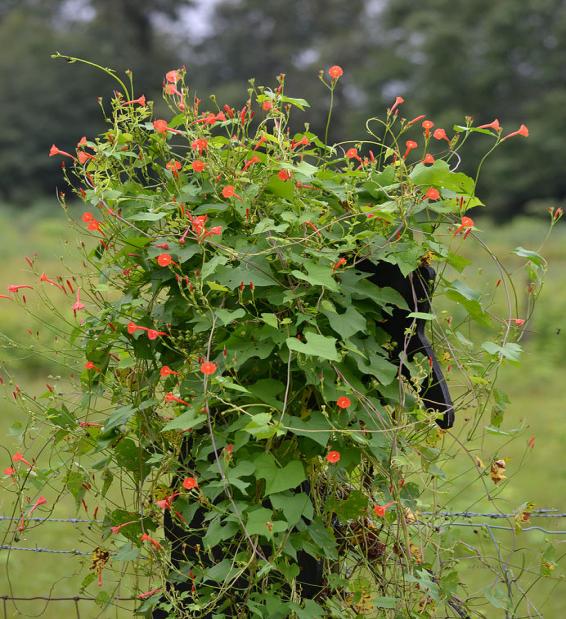
4. Vine: A plant with a climbing or trailing growth habit, which often uses other structures for support. Examples include ivy, grapevines, and morning glories.
Understanding plant habit helps in identifying and classifying plants, as well as in determining their ecological roles and appropriate uses in landscaping.
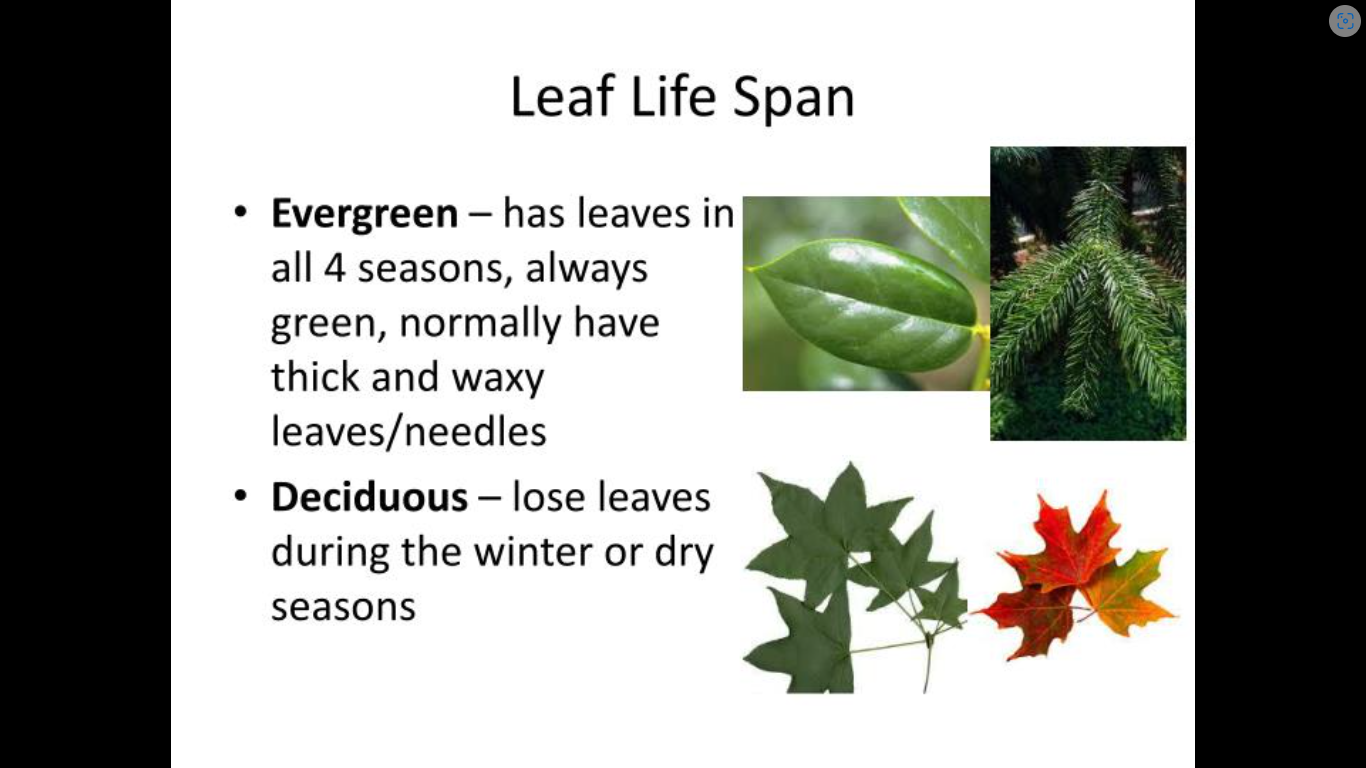 -Leaf lifespan is an important characteristic in plant identification and ecology. It describes whether a plant retains its leaves year-round or sheds them seasonally. The two main categories are:
-Leaf lifespan is an important characteristic in plant identification and ecology. It describes whether a plant retains its leaves year-round or sheds them seasonally. The two main categories are:
1. Evergreen: Plants that retain their leaves throughout the year, regardless of the season. Examples include pine trees, holly, and eucalyptus. These plants typically shed old leaves gradually and continuously rather than all at once.
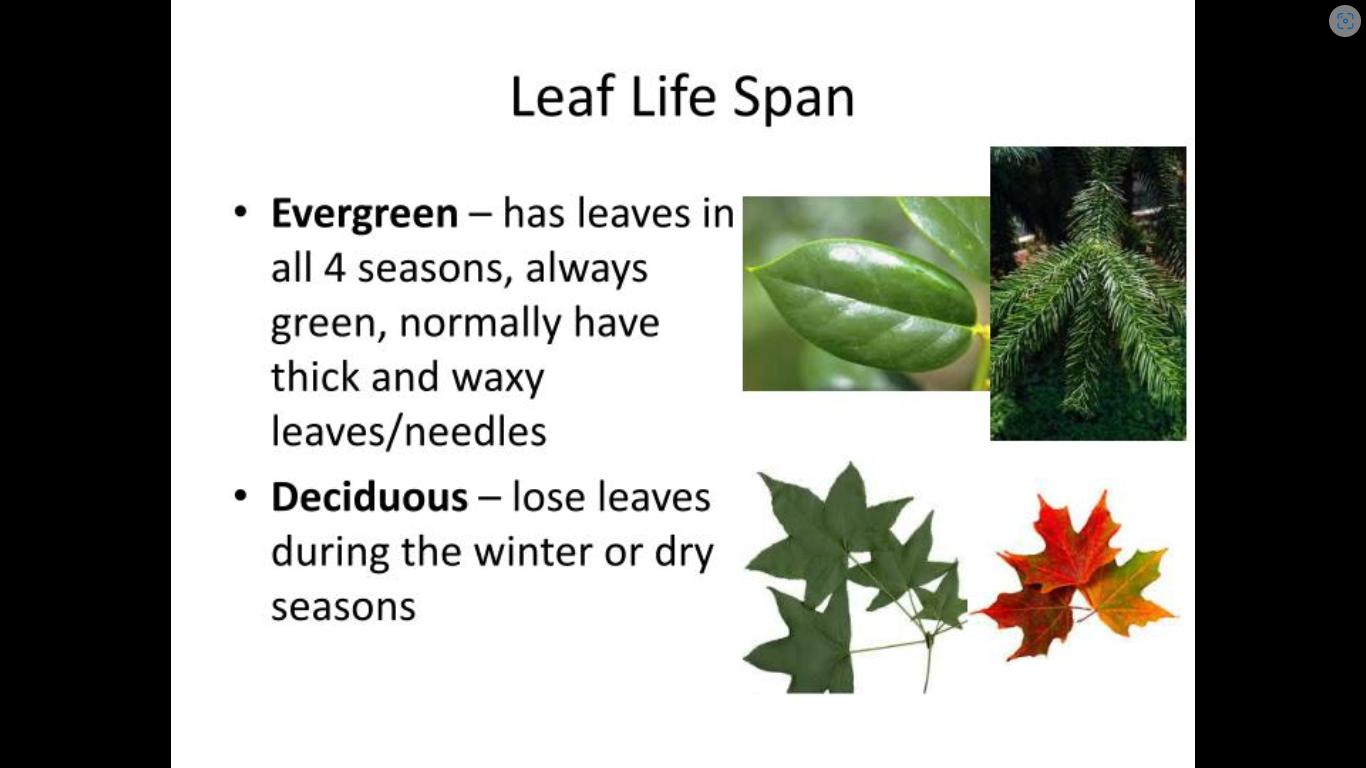
2. Deciduous: Plants that shed all their leaves annually, usually in response to seasonal changes such as colder temperatures in autumn or dry periods in tropical regions. Examples include oak trees, maple trees, and many temperate-zone shrubs. These plants typically regrow new leaves in the spring or the next growing season.
Understanding whether a plant is evergreen or deciduous can help in identifying species and in making ecological and landscaping decisions.
Iii. SIMPLE VS. COMPOUND
1. Simple Leaves: These leaves have a single, undivided blade. Examples include leaves of many dicot plants like roses or oaks.
2. Compound Leaves: These leaves are divided into leaflets, each of which is attached to a central stalk or rachis.
- Palmately Compound: Leaflets radiate from a single point, resembling fingers on a hand. Examples include leaves of horse chestnut or buckeye trees.
- Pinnately Compound: Leaflets are arranged along a central stalk or rachis, resembling a feather. Examples include leaves of walnut or ash trees.
3. Trifoliolate: This specifically refers to a type of compound leaf that has exactly three leaflets attached at a single point. Examples include leaves of clover or some species of beans.
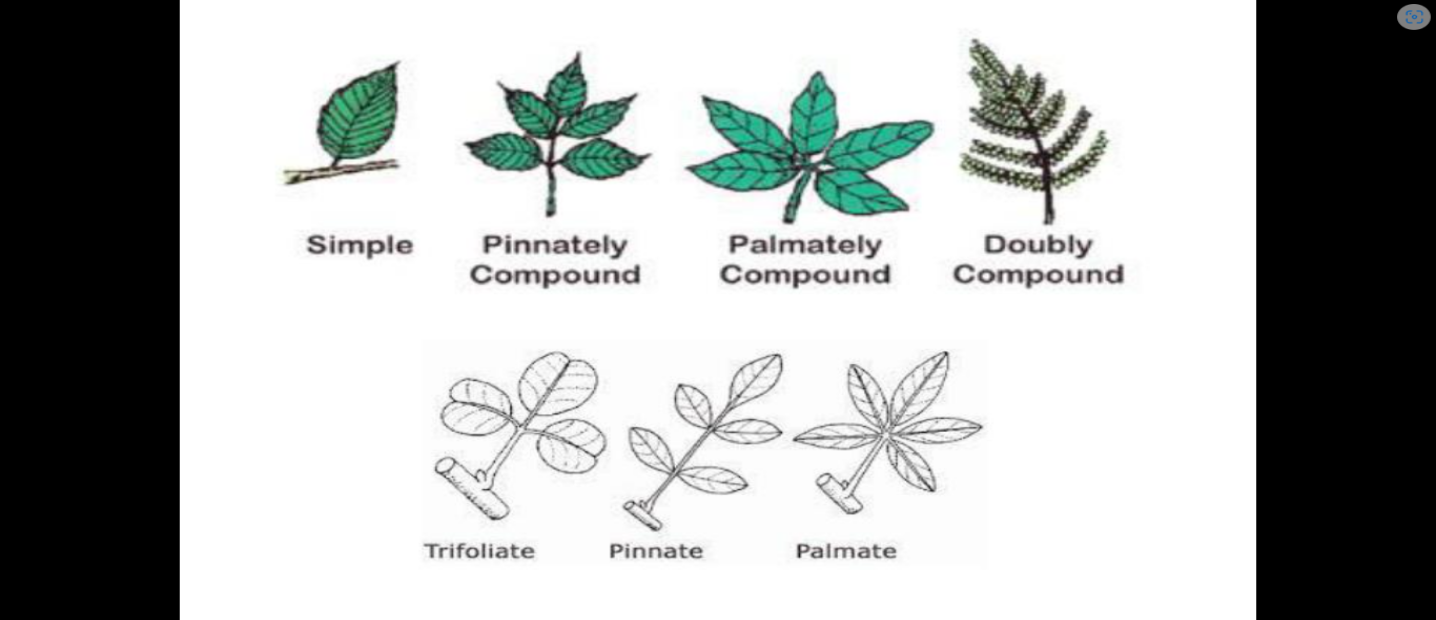 These terms are helpful in botany to describe the diversity in leaf structures found in plants.
These terms are helpful in botany to describe the diversity in leaf structures found in plants.
IV. LEAF ARRANGEMENT
The arrangement of leaves on a stem is known as phyllotaxy. The number and placement of a plant’s leaves will vary depending on the species, with each species exhibiting a characteristic leaf arrangement. Leaves are classified as either alternate,opposite, or whorled.
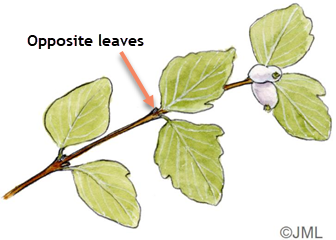
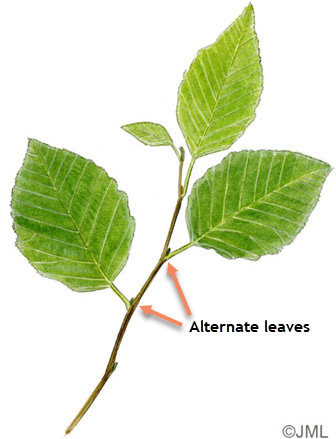
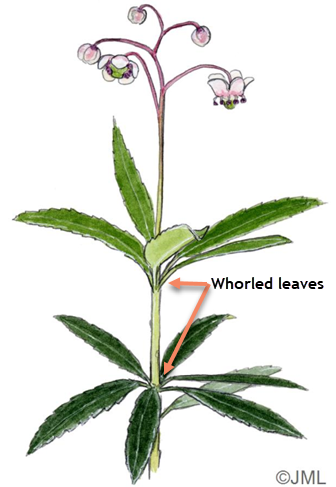
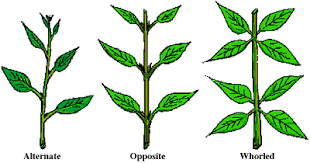
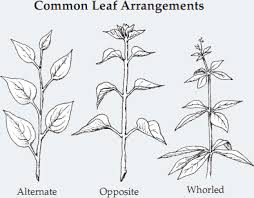
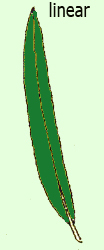
Linear/ensiform: long and narrow with margins more or less parallel, the tip usually pointed.
Falcate: uniformly curved (sickle-shaped).

Deltate: with three sides and broadest below the middle (triangular).

Elliptic: oval and flat in a plane, broadest at the middle and tapered to each end.
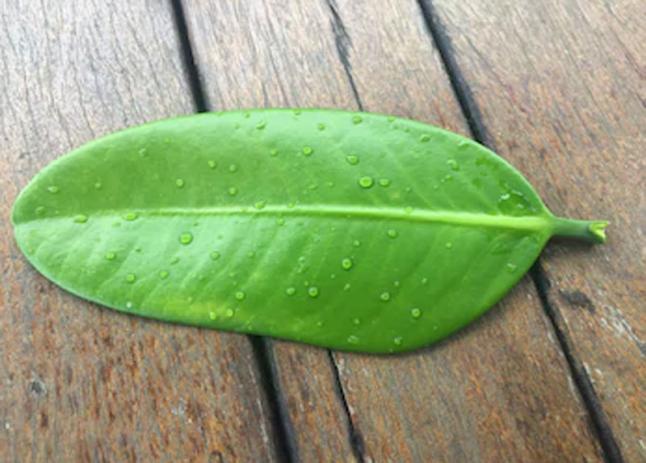
Orbicular: circular or nearly so (round).
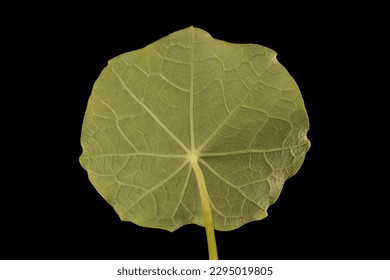
Reniform: shaped like a kidney, generally wider than long with incurved basal margins.
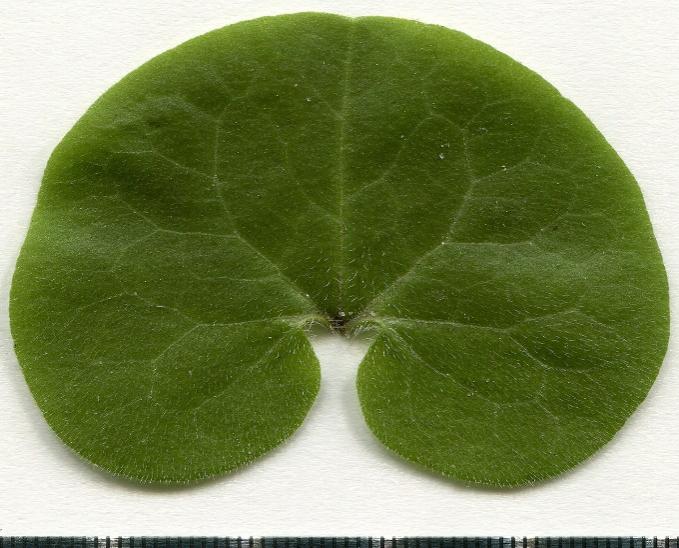
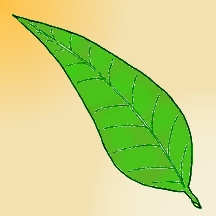 Lanceolate: longer than wide, widest toward the base, the apex tapered to a point.
Lanceolate: longer than wide, widest toward the base, the apex tapered to a point.
Ovate: like a longitudinal section through an egg - broader below the middle.
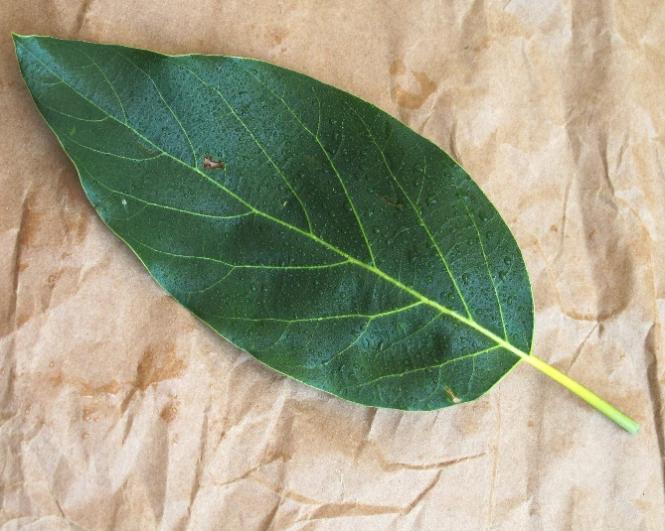
Cordate: shaped like a heart, broadest toward the base with incurved basal margins.
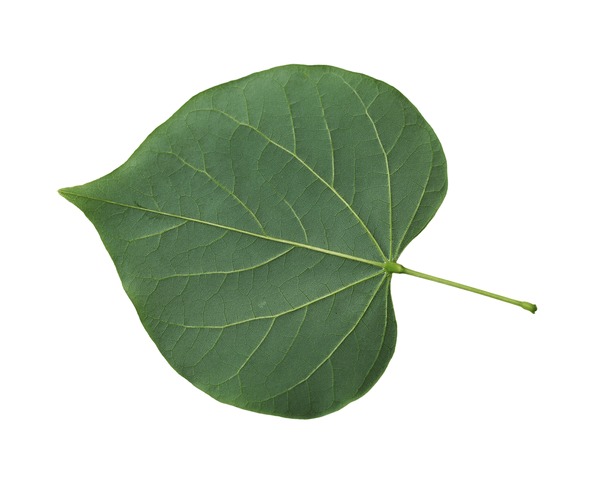
Oblong: broad with margins straight and parallel.
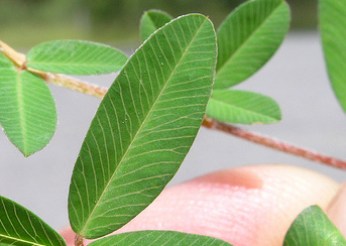

Leaf margin | Leaf midrib |
1. Leaf margin forms the outline of the leaf blade. | 1. Leaf midrib is the central thick vein running through the leaf blade. |
2. Leaf margins are either smooth or rolled downwards and are important for the identification of plants. | 2. It occurs in true leaves and provides support to the leaf. |
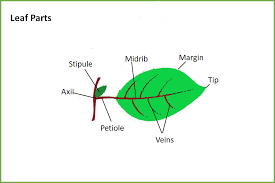
 | Entire: the leaf margins are not toothed or divided in any way (smooth). |  | Wavy: the leaf margins are not divided but curve up and down (undulate). |
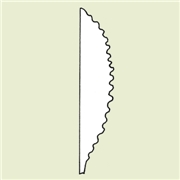 | Crenulate: the leaf margins are cut into small rounded teeth. | 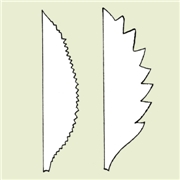 | Toothed: the leaf margins are divided into sharply pointed segments (serrate). |
 | Lobed: the leaf margins are divided into blunt segments. |
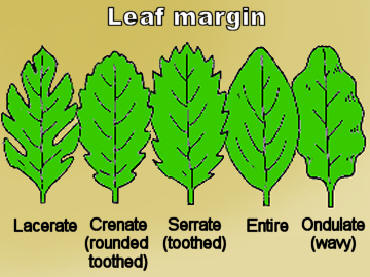
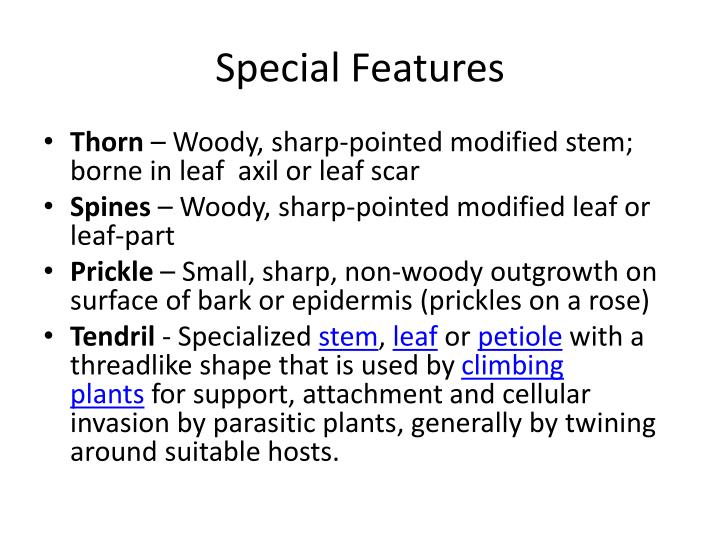
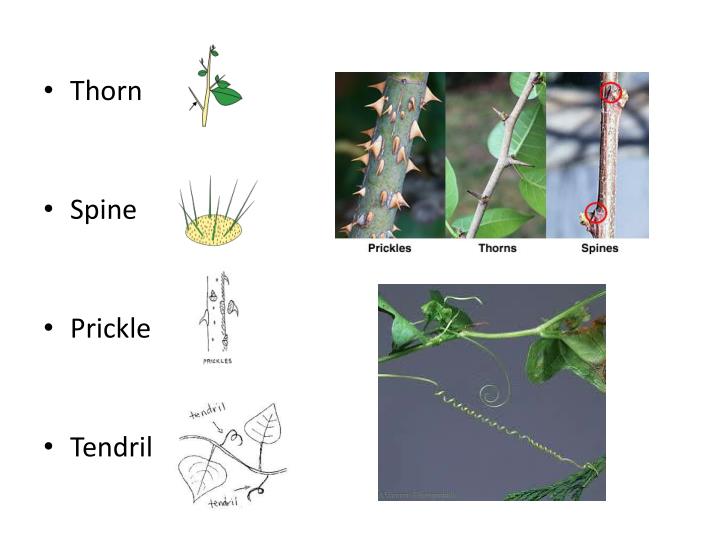
CONSTRUCTION AND USE OF KEYS- DICHOTOMOUS & MEKAS
What is Dichotomous key?
A dichotomous key is a systematic tool used to identify and classify organisms based on their observable characteristics. It consists of a series of paired descriptions or characteristics, known as couplets, where each pair presents two contrasting choices. Users proceed through the key by selecting the choice that best matches the characteristics of the organism they are trying to identify, leading them to the correct identification.
Example Dichotomous Key
Example objects to identify: apple tree, water-lily, fir tree, dandelion, astroturf, seaweed.
1.a. Found in water ………………………….…………………………… Go to 2
1.b. Found on land ………………………………………………..……… Go to 3
2.a. Grows in salt water ………………………………………………… Seaweed
2.b. Does not grow in salt water…………………………………..…… Water-lily
3.a. A real plant …………………………………………………………… Go to 4
3.b. Not a real plant ……………………………………………………… Astroturf
4.a. Grows more than 50 m tall …………………………………………… Fir tree
4.b. Grows less than 50 m tall …………………………….……………… Go to 5
5.a. Produces yellow flowers ………………………………………… Dandelion
5.b. Does not produce yellow flowers ………………………………… Apple tree
Different types of Dichotomous
Nested style: This type of dichotomous key displays the next identification question nested below the answer. Each question is indented to preserve the chart's organization, and as the dichotomous key gets longer, each one will be indented farther than the one before it.
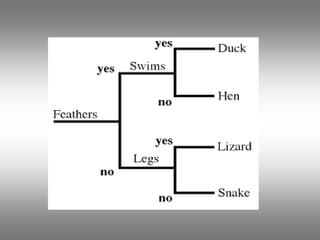
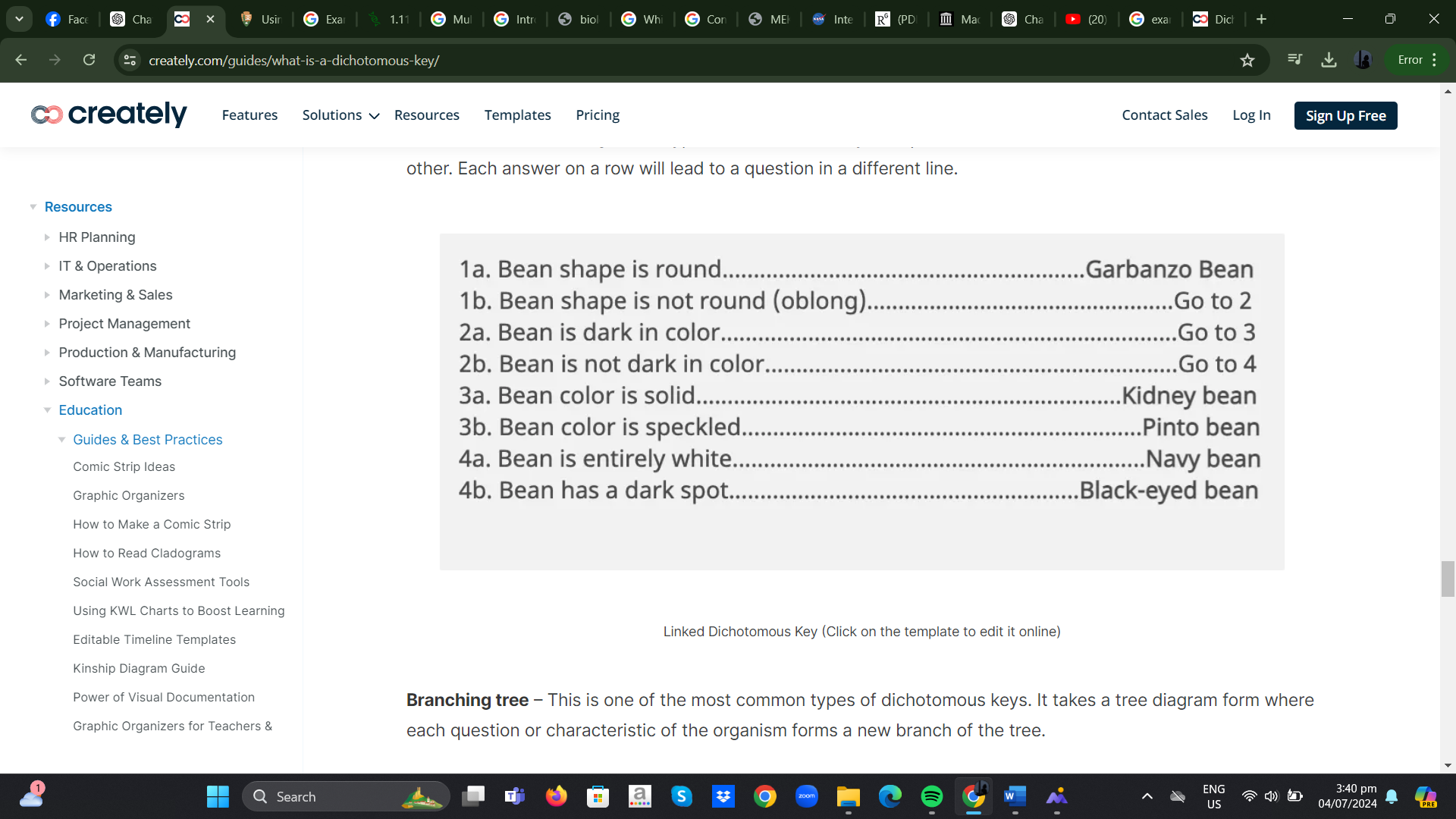 Linked dichotomous key – The questions on this kind of dichotomous key are written one after the other in a list format. A question in a new line will follow each response in a row.
Linked dichotomous key – The questions on this kind of dichotomous key are written one after the other in a list format. A question in a new line will follow each response in a row.
Branching tree – One of the most popular kinds of dichotomous keys is this one. It takes the shape of a tree diagram, with each question or trait of the organism representing a new branch.
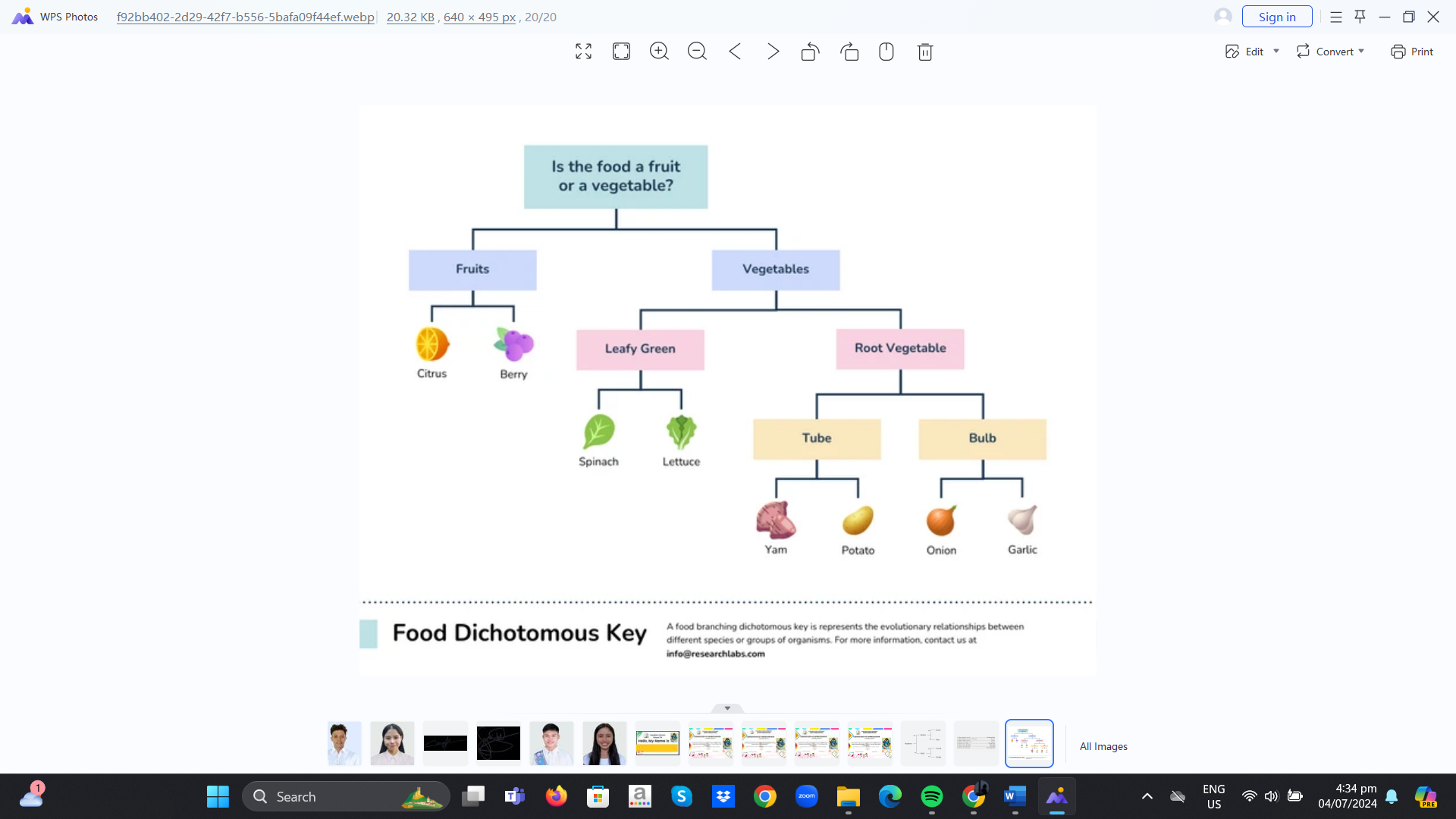
Advantages of Dichotomous
Accurate Identification: By concentrating on a few essential traits, dichotomous keys offer a methodical and precise way to identify organisms or objects. This lessens the possibility of incorrect identifications.
Simple to use: From beginners to pros, the keys' user-friendly design makes them accessible to all.
Consistency: To ensure that many users can consistently arrive at the same identification for the same item, dichotomous keys adhere to a standard structure that uses particular terminology and criteria.
Excellent for learning: Dichotomous keys aid in the observation, comparison, and comprehension of the traits of many creatures by students, enabling them to get a deeper understanding of the natural world.
Research-useful: These keys can be used in scientific studies to categorize and record biodiversity, which is crucial for comprehending species interactions and ecological processes. S.
Dichotomous keys are useful for field work since they are field-portable and suitable for ecological studies, biodiversity assessments, and on-site surveys.
What is the function of a dichotomous key and how is it used?
Dichotomous keys are used not only for plants but also for animals, insects, and other organisms. They are essential in fieldwork, classrooms, and research settings where accurate identification is crucial for understanding biodiversity and ecological interactions.
Dichotomous Key Definition
A dichotomous key is a tool used in biology and other scientific fields to help identify and classify organisms, objects, or other items based on their characteristics. Simply put, it is a method used to identify a species by answering a series of questions based on contrasting features (eg: physical characteristics) that have two possible outcomes.
“Dichotomous” means divided into two parts, hence the dichotomous keys always present two choices based on the key characteristics of the organism in each step. By correctly selecting the right choice at each stage, the user will be able to identify the name of the organism at the end. The further you divide the key, the more you learn about the specimen you are trying to identify.
What is the dichotomous key used for
A dichotomous key is usually used for
How to Make a Dichotomous Key
Here is a simple example of a dichotomous key for identifying three common trees:
1a. Leaves needle-like …………..Go to 2
1b. Leaves broad and flat ……….Go to 3
2a. Needles in clusters ………..Pine
2b. Needles single …………….Fir
3a. Leaves with lobes ………….Oak
3b. Leaves without lobes ……….Maple
Advantages
Benefits of Dichotomous Key
What are the different types of dichotomous keys?
How does a dichotomous key work/ how to use a dichotomous key?
is only a yes or no response. Depending on the yes or no answer, the researcher is taken on a certain path through levels of classification until the organism is identified. Before using the dichotomous key, the researcher should have some knowledge about the features of the type of organism being investigated.
Mekas Keys Definition
A Mekas key is a more advanced and versatile tool for identifying organisms. It is often used when dichotomous keys are too simplistic or when a more flexible identification process is needed.
An example of a Mekas key would be an online platform where a user enters various observable characteristics (e.g., leaf shape, flower color) and the algorithm narrows down the possible species.
Use
Advantages
Conclusion
Both dichotomous and Mekas keys are valuable tools for organism identification. Dichotomous keys are ideal for simpler, educational, or initial identification tasks, while Mekas keys are better suited for more complex and detailed identification needs. The choice between the two depends on the specific requirements and available resources of the user.
By understanding the construction and use of these keys, biologists, ecologists, and students can effectively identify organisms and contribute to our knowledge of biodiversity and ecology
FLORAS, MANUALS, & DESCRIPTIONS
A flora is a systematic enumeration of the plant species occurring in a given region. A flora may cover any suitable area from a Taluka to district, state, country or even a continent. The word "flora" also refers to publication made from systematic enumeration of the plant species. A Flora may contain anything from a simple list of the plants occurring in an area to a very detailed account of those plants. Flora comprises scientific names, common names, literature references, taxonomic descriptions, habit, habitats, geographical distribution, flowering times, fruiting times, economic or medicinal uses, important notes related to plants and illustrations. Floras often also give a method in the form of artificial key to enable the user to identify an unknown plant.
Contents of a Flora
-Definition and scope of flora
-Historical perspectives on botanical exploration and documentation
-Overview of plant taxonomy.
- Hierarchal classification (Kingdom, Phylum/Division, Class, Order, Family, Genus, Species).
-Examples of classification for specific plant groups.
-The different types of flora from native to invasive flora
-Classification based on geographical distribution.
-Classification based on ecological roles and habitats.
-Categories:
-Classification based on plant morphology
-Key morphological features: leaves, flowers, stems, roots
-Importance of plants in agriculture, medicine, and industry
-Examples of economically important plants: wheat, rice, maize
-Medicinal plants and their uses
-Importance of conserving plant biodiversity
-Threats to flora: habitat destructon, climate change, invasive species
-Conservation strategies: protected areas, botanical gardens, seed banks
-Morphological analysis
-Molecular Techniques: DNA sequencing, phylogenetic analysis
-Chemataxonomy: analysis of chemical compounds in plants
-Impact of climate change on plant distribution and phenology
-Adaptations of plants to changing clmates
-Case studies and examples
TAXONOMIC TOOL OF FLORAS
Flora (plants) are classified as follows:
Gymnosperms
Monocot
Dicot
Pteridophytae
Bryophytae
Thallophytae
Angiosperms
Phanerogamae
Cryptogamae
Plantae
Classifications
Plants can be classified according to plenty of divisions considering lots of factors such as:
i. Presence or absence of tissue in plants
ii. The ability of a plant to bear seeds or not
The plant generally consists of :
a) Plant body: root, stem, and leaves
b) Vascular system: responsible for the transport of the water and nutrients (phloem and xylem)
c) Seed formation: may be naked or enclosed seeds
Based on the structure of plants:
a) Thallophyta: this type is the lower or primitive plant because they don’t have a differentiated design as the body of the plant may not have roots, stems, or leaves like algae.
b) Bryophytes: this type has a differentiated body design but this type does not have a transport system that is responsible for the conduction of the water in the plant. So this type always lives in moist sandy regions as they can bear hard environmental factors. This type is also named amphibians since it does not have vascular tissues.
c) Pteridophyta: this type is the oldest type of vascular plant. This type can be considered a bryophyte but with a tissue that can be used to conduct water. In this type, the organs that are responsible for reproductivity are unclear. In addition, the embryo of this type is naked.
d) Phanerogamae: this type includes plants that bear seeds. This type has differentiated stems, roots, leaves, and reproductive organs as well. In addition, this type of plant has a vascular system. Seeds of this type can be enclosed or naked. There are two sub-classifications: Gymnosperms that produce naked seeds. They represent about 650 types of living plants. This type has a vascular system but does not have vessels. In Gymnosperms, there is no formation of fruits. The other type is angiosperms in which seeds are enclosed, not naked. Its seeds are formed inside the tissue of the plant to produce the fruit.
Therefore, it is referred to as flowering plants. Angiosperms have a well-differentiated vascular system which consists of xylem and phloem.
Additionally, there is another classification depending on the original land of the plants; native flora and non-native flora.
Flora Examples
There are a lot of examples of flora”plants” all over the world depending on the classification above as the following:
Bryophyte flora: Examples of this type of plant are mosses, liverworts, and hornworts. They are bryophytes, nonvascular and primitive flora. In addition, they bear spores. They are distributed all over the world but cannot be found in saltwater. They are mainly used in the erosion of the soil.
Pteridophyta flora: An example of this type is Salvinia natans. This species is a non-seed flora, meaning it does not produce seed but spores under its leaves, which the winds take from one plant to another over long distances.
Gymnosperms: The most common example of this type is the Giant Sequoia Tree.
Angiosperms: They are floral (flowering) plants. The most common examples are Amazon water lilies and sunflowers. Generally, this type can be used widely for humans and animals in the medical field. Therefore, it can be considered a flora medicine or used generally for health purposes.
« Amazon water lily is a rainforest flora as they live in the Amazon forest. It is also referred to as an aquatic plant as it lives in lakes of America, especially the southern ones.
« Sunflower plant is a flora (a flowering plant). As it can be used as a flower and as a plant.
Data presented In Flora:
Types of flora
Native flora consists of plants that have originated and evolved in a specific area without human intervention. These plants are well-adapted to the local climate and soil conditions.
Exotic flora, also known as alien or non-native plants, are those introduced to a region by humans, whether intentionally for agriculture and gardening or accidentally. These plants are not originally from the area and can sometimes threaten local biodiversity by competing with native species for resources.
Endemic flora refers to plants that are found exclusively in one geographic location, such as an island, country, or other defined area. These species are particularly vulnerable to extinction due to their limited distribution.
Agricultural flora includes plants that are grown by humans for food, fiber, medicinal purposes, and other uses. These species are a fundamental component of human agriculture ecosystems. Common examples are wheat, rice, and maize, which are staple crops around the world.
Invasive flora comprises non-native plants that proliferate rapidly and spread across areas, often harming local ecosystems. These plants are highly adaptive, aggressive, and can dominate over native species, disrupting ecological balances.
Importance of Flora
Oxygen Production
Plants produce oxygen through photosynthesis, which is vital for the survival of most living organisms, including humans.
Food Source
Plants are the primary producers in ecosystems, forming the base of the food chain and providing essential nutrients to both animals and humans.
Ecological Stability
Flora contributes to the stability of various ecosystems. Plants regulate the water cycle, help in soil formation, and prevent erosion by anchoring the soil with their roots.
Biodiversity
Plants support biodiversity by providing habitats, food, and protection for a wide range of organisms.
Climate Regulation
Flora plays a significant role in moderating climates. Forests, for instance, can cool the atmosphere and help regulate local and global temperatures.
Medicinal Resources
Many plants are used to produce medicines, drugs, and herbal remedies that treat a multitude of illnesses and health conditions.
Aesthetic and Cultural Value
Plants contribute significantly to the aesthetic value of our environment and have deep cultural, spiritual, and recreational significance.
Manuals
Manuals are the taxonomic aid which maintains the information for identification of names of species found in an area. Plant taxonomy manuals are invaluable resources that provide detailed guidance on identifying, classifying, and understanding plant species. These reference books offer systematic information, including identification keys, descriptions of plant morphology, taxonomic systems, and visual illustrations to aid in plant identification. Plant taxonomy manuals play a crucial role in botanical research, conservation efforts, and education, serving as essential tools for botanists, researchers, students, and enthusiasts. By facilitating accurate species identification and classification, these manuals contribute to the systematic study, documentation, and conservation of plant diversity, making them foundational resources in the field of botany.
Types of manuals
Example: “Botany in a Day: The Patterns Method of Plant Identification" by Thomas J. Elpel.
Example: “Training Manual on Plant Taxonomy (Dicots) in Southeast Asia".
Example: “The Jepson Manual: Vascular Plants of California".
Example: “Manual of the Vascular Plants of Texas".
Structure of Manual
Here is an outline of the common structure found in manuals:
1. Title Page: The manual's title, author(s), publisher, and edition are usually displayed prominently on the title page.
2. Table of Contents: An organized list of the sections, chapters, and topics covered in the manual, along with corresponding page numbers for easy navigation.
3. Introduction: An introductory section that provides an overview of the manual's purpose, scope, and how to use it effectively for plant identification.
4. Key to Identification: One of the central components of a plant taxonomy manual is the key to identification. Keys are typically dichotomous keys that present a series of paired statements or questions to guide users to the correct plant species.
5. Species Descriptions: Detailed descriptions of plant species, including morphological characteristics such as leaf shape, flower color, fruit type, and other distinguishing features. Descriptions may also include information on habitat, distribution, and ecological preferences.
6. Illustrations or Photographs: Visual aids such as illustrations, photographs, or diagrams are often included to help users visualize key characteristics of plant species and aid in accurate identification.
7. Distribution Maps: Maps showing the geographical distribution of plant species are sometimes included to provide additional context for users seeking to identify plants in specific regions.
8. Glossary: A glossary of terms used in the manual, especially technical botanical terms, to help users understand the terminology used in plant taxonomy.
9. References: Citations to sources, literature, or research used in compiling the manual, providing users with additional resources for further study or verification.
10. Index: An index of plant names, terms, and topics covered in the manual, allowing users to quickly locate specific information within the document.
Content of Manual
Here is a comprehensive overview of the content commonly found in manuals in plant taxonomy:
1. Introduction:
- Overview of the manual's purpose and scope.
- Explanation of how to use the manual for plant identification.
2. Key to Identification:
- Dichotomous keys or other identification tools to help users navigate through characteristics and identify plant species.
3. Species Descriptions:
- Detailed descriptions of plant species, including:
- Morphological characteristics (leaf shape, flower structure, fruit type).
- Habitat preferences.
- Geographic distribution.
- Ecological roles.
4. Illustrations or Photographs:
- Visual aids such as illustrations, photographs, or diagrams to assist in identifying plant features.
5. Taxonomic Classification:
- Information on the taxonomic hierarchy of plant species, including family, genus, and species names.
6. Distribution Maps:
- Maps showing the geographical distribution of plant species to aid in understanding their range.
7. Glossary:
- Definitions of botanical terms and terminology used in the manual for clarity and reference.
8. References and Citations:
- Citations to sources, literature, or research used in compiling the manual to provide credibility and additional resources for users.
9. Index:
- An index of plant names, terms, and topics covered in the manual for easy navigation and reference.
10. Taxonomic Keys:
- Detailed keys for identifying plant species based on specific characteristics.
11. Ecological Information:
- Information on the ecological roles, interactions, and adaptations of different plant species.
12. Conservation Status:
- Information on the conservation status of plant species, including any threats or endangered species.
13. Additional Resources:
- Recommendations for further reading, online resources, or organizations related to plant taxonomy.
Importance of Manuals
Manuals play a crucial role in plant taxonomy by serving as essential tools for accurately identifying, classifying, and studying plant species. Here are the key reasons highlighting the importance of manuals in plant taxonomy:
1. Identification Aid: Manuals provide detailed descriptions, illustrations, and identification keys that assist botanists, researchers, students, and enthusiasts in accurately identifying plant species based on their morphological characteristics.
2. Classification Assistance: Manuals help in organizing and classifying plant species into taxonomic groups, providing a systematic framework for understanding the relationships between different plants and their evolutionary history.
3. Species Documentation: Manuals serve as repositories of information about plant species, offering comprehensive data on plant morphology, distribution, habitat preferences, ecological roles, and other essential characteristics.
4. Biodiversity Conservation: By aiding in the accurate identification and documentation of plant species, manuals contribute to biodiversity conservation efforts by helping to identify rare, endangered, or threatened plant species that require protection.
5. Educational Resource: Manuals are valuable educational resources for botanical students and researchers, offering a structured and comprehensive guide to understanding plant diversity, taxonomy, and identification principles.
6. Research Tool: Manuals serve as valuable reference materials for botanical research, providing a wealth of information on plant species that can be used for scientific studies, ecological research, and taxonomic investigations.
7. Standardization: Manuals help establish standardized terminology, classification systems, and identification methods, ensuring consistency and accuracy in plant taxonomy practices across different regions and studies.
8. Field Work Companion: Field manuals are particularly useful for botanists and researchers conducting fieldwork, providing portable guides for on-the-spot plant identification and data collection.
9. Historical Records: Manuals often contain historical and taxonomic information about plant species, documenting the evolution of plant taxonomy and the changes in classification systems over time.
10. Global Collaboration: Manuals facilitate global collaboration among botanists and researchers by providing a common reference point for plant identification and taxonomy, fostering shared knowledge and expertise in the botanical community.
In conclusion, manuals play a fundamental role in plant taxonomy by serving as comprehensive guides for plant identification, classification, research, education, and conservation, ultimately contributing to our understanding of plant diversity and the preservation of botanical heritage.
Descriptions
In plant taxonomy, descriptions play a critical role in providing detailed information about plants, aiding in their identification and classification. Here is an in-depth look at descriptions in plant taxonomy:
Purpose of Descriptions:
- Identification: Descriptions serve to accurately describe the characteristics of a plant species, enabling botanists, researchers, and enthusiasts to identify and differentiate between different plants.
- Documentation: Descriptions provide a standardized format for recording the key features of plant species, contributing to the documentation and cataloging of plant diversity.
- Taxonomic Classification: Detailed descriptions help in placing plants into the appropriate taxonomic categories based on their morphological traits and characteristics.
Components of Plant Descriptions:
1. General Characteristics: Descriptions typically start with general traits like growth habit, size, shape, and overall appearance of the plant.
2. Vegetative Features: Descriptions include details about leaves, stems, roots, and other vegetative structures such as color, texture, arrangement, and shape.
3. Reproductive Structures: Information about flowers, fruits, seeds, and other reproductive features is crucial for accurate plant identification.
4. Habitat and Distribution: Descriptions may also include details about the plant's natural habitat, geographic distribution, elevation preferences, and ecological associations.
5. Ecological Notes: Some descriptions provide ecological information such as interactions with other species, adaptations, and ecological significance.
6. Taxonomic Characteristics: Descriptions often highlight unique characteristics that help in distinguishing the plant from closely related species.
7. Illustrations: In many cases, descriptions are accompanied by illustrations or photographs to visually represent key features of the plant.
Characteristics of Effective Plant Descriptions:
- Accuracy: Descriptions should be precise, accurate, and based on scientific observations to ensure correct plant identification.
- Consistency: Descriptions follow a standard format and use consistent terminology to maintain uniformity across different plant species.
- Clarity: Descriptions should be clear and easy to understand, even for individuals with varying levels of botanical knowledge.
- Detail: Including sufficient detail in descriptions is essential to capture the full range of characteristics that define a plant species.
- Standardization: Following established guidelines and conventions in botanical description writing ensures uniformity and comparability across different plant species.
In conclusion, plant descriptions are fundamental in plant taxonomy as they provide a systematic and standardized method for documenting and identifying plant species based on their morphological characteristics. These descriptions are essential tools for botanists, researchers, educators, and conservationists working in the field of plant science.
REFERENCES:
Joshua. (2014, July 20). PPT - Vegetative Characteristics PowerPoint Presentation, free download - ID:2026504. SlideServe. https://www.slideserve.com/joshua/vegetative-characteristics
Harper, L. (2018, November 25). Leaf shape: margins, venation and position. Lizzie Harper. https://lizzieharper.co.uk/2013/11/leaf-shape-margins-venation-and-position/
Libretexts. (2023, October 31). 30.8: Leaves - leaf structure and arrangment. Biology LibreTexts. https://bio.libretexts.org/Bookshelves/Introductory_and_General_Biology/General_Biology_(Boundless)/30%3A_Plant_Form_and_Physiology/30.08%3A_Leaves_-_Leaf_Structure_and_Arrangment#:~:text=Leaf%20Arrangement&text=Leaves%20are%20classified%20as%20either,a%20spiral%20along%20the%20stem.
plant. (2024). https://dictionary.cambridge.org/us/dictionary/english/plant
Shapes of plant leaf. (2020, September 13). [Slide show]. SlideShare. https://www.slideshare.net/slideshow/shapes-of-plant-leaf/238466853
LibreTexts. (n.d.). Introduction to dichotomous keys. In Red Seal Landscape Horticulturist Identify Plants and Plant Requirements I. Retrieved from https://bio.libretexts.org/Bookshelves/Agriculture_and_Horticulture/Red_Seal_Landscape_Horticulturist_Identify_Plants_and_Plant_Requirements_I_(Nakano)/01%3A_Plant_Identification/1.11%3A_Introduction_to_Dichotomous_Keys
National Park Service. (n.d.). Dichotomous key. Retrieved from https://www.nps.gov/teachers/classrooms/dichotomous-key.htm
Kwantlen Polytechnic University. (n.d.). Introduction to dichotomous keys. In Plant Identification. Retrieved from https://kpu.pressbooks.pub/plant-identification/chapter/introduction-to-dichotomous-keys/
Smith, T. (2021). Identification and use of dichotomous keys. Journal of Biological Education.
Botanical Survey of India. (n.d.). Flora. Retrieved from https://bsi.gov.in/page/en/flora
SlideShare. (n.d.). Taxonomic tool of flora. Retrieved from https://www.slideshare.net/slideshow/taxonomic-tool-of-flora/89394351
Biology Online. (n.d.). Flora. Retrieved from https://www.biologyonline.com/dictionary/flora
Examples. (n.d.). Flora. Retrieved from https://www.examples.com/biology/flora.html
Judd, W. S., Campbell, C. S., Kellogg, E. A., Stevens, P. F., & Donoghue, M. J. (2016). Plant Systematics: A Phylogenetic Approach. Sinauer Associates.
Mabberley, D. J. (1997). The Plant-Book: A Portable Dictionary of the Vascular Plants. Cambridge University Press.
Cronk, J. K., & Fennessy, M. S. (2001). Wetland Plants: Biology and Ecology. Lewis Publishers.
Simpson, M. G. (2010). Plant Systematics. Elsevier Academic Press.
Simpson, B. B., & Ogorzaly, M. C. (2013). Economic Botany: Plants in Our World. McGraw-Hill Education.
Primack, R. B. (2014). Essentials of Conservation Biology. Sinauer Associates.
Judd, W. S., Campbell, C. S., Kellogg, E. A., Stevens, P. F., & Donoghue, M. J. (2016). Plant Systematics: A Phylogenetic Approach. Sinauer Associates.
Walther, G.-R., Post, E., Convey, P., Menzel, A., Parmesan, C., Beebee, T. J. C., Fromentin, J.-M., Hoegh-Guldberg, O., & Bairlein, F. (2002). Ecological responses to recent climate change. Nature, 416(6879), 389-395.
Aakash. (n.d.). Taxonomical aids: Flora, manual, monograph, and catalogues. Retrieved from https://www.aakash.ac.in/important-concepts/biology/taxonomical-aids-flora-manual-monograph-and-catalogues
The Botanical Society of America. (n.d.). Retrieved from https://www.botany.org/?need_sec_link=1&sec_link_scene=im
Elpel, T. J. (2004). Botany in a Day: The Patterns Method of Plant Identification. HOPS Press, LLC.
ASEAN Centre for Biodiversity. (n.d.). Training manual on plant taxonomy (dicots) in Southeast Asia. Retrieved from https://www.pdfcoffee.com/04-plant-taxonomy-manual-pdf-free.html
University of California Press. (2012). The Jepson Manual: Vascular Plants of California. Retrieved from https://www.ucpress.edu/book/9780520253124/the-jepson-manual
Correll, D. S., & Johnston, M. C. (1970). Manual of the Vascular Plants of Texas. Texas Research Foundation. Retrieved from https://www.pdfcoffee.com/manual-of-the-vascular-plants-of-texas-texas-research-foundation-pdf-free.html
The Botanical Society of America (BSA). (n.d.). Retrieved from http://www.botany.org
The International Association for Plant Taxonomy (IAPT). (n.d.). Retrieved from http://www.iapt-taxon.org
Stuessy, T. F. (2009). Plant Taxonomy: The Systematic Evaluation of Comparative Data.
Mauseth, J. D. (2017). Botany: An Introduction to Plant Biology.
Simpson, M. G. (2010). Plant Systematics. Elsevier Academic Press.
INTRODUCTION TO PLANT IDENTIFICATION
A detailed report presented to
MRS. JADE E. CALIHAT
School Year 2023-2024
Summer Class
Submitted by:
Group 3- BS BIO Block A
Aguilar, Lawrence Montes
Bendoy, Charie Jean
Hinampas, Michaela Samson
Ramos, Alexa
Sabate, Tsarina
Siguisabal, Carisse Marianne
Singcol, Carlo
TOPIC OUTLINE
Learning Objectives:
5. Appreciate Plant Biodiversity: Gain a deeper appreciation for the diversity of plant life and the importance of accurate identification in botanical studies and conservation efforts.
INTRODUCTION
In this chapter, we delve into the fascinating world of plant identification, a crucial aspect of botany that enables us to classify and understand the immense diversity of plant life. The chapter begins with an exploration of vegetative characters, the fundamental traits of plants that aid in their identification. Understanding these vegetative features is essential as they form the basis for recognizing and distinguishing different plant species.
Next, we will examine the construction and use of identification keys, focusing on two primary types: dichotomous keys and Multi-Entry Key Applications (MEKAs). Dichotomous keys are traditional tools that guide users through a series of choices based on plant characteristics, leading to the correct identification. MEKAs offer a more flexible approach, allowing multiple entry points and thus enhancing the identification process.
Finally, the chapter covers the indispensable resources of floras, manuals, and descriptions. These comprehensive references provide detailed information on plant species, their habitats, and their distinguishing features, serving as essential tools for botanists, horticulturists, and plant enthusiasts alike.
Through this chapter, readers will gain the foundational knowledge and practical skills necessary for effective plant identification, paving the way for further botanical studies and appreciation of plant biodiversity.
VEGETATIVE CHARACTERS
How can we use these characteristics to help us identify plants?
Vegetative characters refer to the non-reproductive parts of a plant, which include leaves, stems, and roots. These characteristics are essential for plant identification because they are often present throughout the year and provide reliable features that can be used to distinguish between different species.
Why do we refer to the non-reproductive parts of the plants?
Referring to the non-reproductive parts of plants—also known as vegetative characters—is important for several reasons:
In summary, focusing on vegetative parts enhances the ability to identify plants reliably and consistently, regardless of the season or reproductive stage of the plant. This makes vegetative characters indispensable in botanical studies, fieldwork, and plant identification guides
Here are some key vegetative characters and how they can help in identifying plants:
 -Plant habit refers to the general growth form or shape of a plant. Here are the main types:
-Plant habit refers to the general growth form or shape of a plant. Here are the main types:

 1. Herb: A plant with a non-woody stem that dies back to the ground after each growing season. Examples include basil, lettuce, and daisies.
1. Herb: A plant with a non-woody stem that dies back to the ground after each growing season. Examples include basil, lettuce, and daisies.


3. Tree: A large woody plant with a single main stem or trunk, supporting branches and leaves. Examples include oak, pine, and maple trees.

4. Vine: A plant with a climbing or trailing growth habit, which often uses other structures for support. Examples include ivy, grapevines, and morning glories.
Understanding plant habit helps in identifying and classifying plants, as well as in determining their ecological roles and appropriate uses in landscaping.
 -Leaf lifespan is an important characteristic in plant identification and ecology. It describes whether a plant retains its leaves year-round or sheds them seasonally. The two main categories are:
-Leaf lifespan is an important characteristic in plant identification and ecology. It describes whether a plant retains its leaves year-round or sheds them seasonally. The two main categories are:
1. Evergreen: Plants that retain their leaves throughout the year, regardless of the season. Examples include pine trees, holly, and eucalyptus. These plants typically shed old leaves gradually and continuously rather than all at once.

2. Deciduous: Plants that shed all their leaves annually, usually in response to seasonal changes such as colder temperatures in autumn or dry periods in tropical regions. Examples include oak trees, maple trees, and many temperate-zone shrubs. These plants typically regrow new leaves in the spring or the next growing season.
Understanding whether a plant is evergreen or deciduous can help in identifying species and in making ecological and landscaping decisions.
Iii. SIMPLE VS. COMPOUND
1. Simple Leaves: These leaves have a single, undivided blade. Examples include leaves of many dicot plants like roses or oaks.
2. Compound Leaves: These leaves are divided into leaflets, each of which is attached to a central stalk or rachis.
- Palmately Compound: Leaflets radiate from a single point, resembling fingers on a hand. Examples include leaves of horse chestnut or buckeye trees.
- Pinnately Compound: Leaflets are arranged along a central stalk or rachis, resembling a feather. Examples include leaves of walnut or ash trees.
3. Trifoliolate: This specifically refers to a type of compound leaf that has exactly three leaflets attached at a single point. Examples include leaves of clover or some species of beans.
 These terms are helpful in botany to describe the diversity in leaf structures found in plants.
These terms are helpful in botany to describe the diversity in leaf structures found in plants.
IV. LEAF ARRANGEMENT
The arrangement of leaves on a stem is known as phyllotaxy. The number and placement of a plant’s leaves will vary depending on the species, with each species exhibiting a characteristic leaf arrangement. Leaves are classified as either alternate,opposite, or whorled.






Linear/ensiform: long and narrow with margins more or less parallel, the tip usually pointed.
Falcate: uniformly curved (sickle-shaped).

Deltate: with three sides and broadest below the middle (triangular).

Elliptic: oval and flat in a plane, broadest at the middle and tapered to each end.

Orbicular: circular or nearly so (round).

Reniform: shaped like a kidney, generally wider than long with incurved basal margins.

 Lanceolate: longer than wide, widest toward the base, the apex tapered to a point.
Lanceolate: longer than wide, widest toward the base, the apex tapered to a point.
Ovate: like a longitudinal section through an egg - broader below the middle.

Cordate: shaped like a heart, broadest toward the base with incurved basal margins.

Oblong: broad with margins straight and parallel.


Leaf margin | Leaf midrib |
1. Leaf margin forms the outline of the leaf blade. | 1. Leaf midrib is the central thick vein running through the leaf blade. |
2. Leaf margins are either smooth or rolled downwards and are important for the identification of plants. | 2. It occurs in true leaves and provides support to the leaf. |

 | Entire: the leaf margins are not toothed or divided in any way (smooth). |  | Wavy: the leaf margins are not divided but curve up and down (undulate). |
 | Crenulate: the leaf margins are cut into small rounded teeth. |  | Toothed: the leaf margins are divided into sharply pointed segments (serrate). |
 | Lobed: the leaf margins are divided into blunt segments. |



CONSTRUCTION AND USE OF KEYS- DICHOTOMOUS & MEKAS
What is Dichotomous key?
A dichotomous key is a systematic tool used to identify and classify organisms based on their observable characteristics. It consists of a series of paired descriptions or characteristics, known as couplets, where each pair presents two contrasting choices. Users proceed through the key by selecting the choice that best matches the characteristics of the organism they are trying to identify, leading them to the correct identification.
Example Dichotomous Key
Example objects to identify: apple tree, water-lily, fir tree, dandelion, astroturf, seaweed.
1.a. Found in water ………………………….…………………………… Go to 2
1.b. Found on land ………………………………………………..……… Go to 3
2.a. Grows in salt water ………………………………………………… Seaweed
2.b. Does not grow in salt water…………………………………..…… Water-lily
3.a. A real plant …………………………………………………………… Go to 4
3.b. Not a real plant ……………………………………………………… Astroturf
4.a. Grows more than 50 m tall …………………………………………… Fir tree
4.b. Grows less than 50 m tall …………………………….……………… Go to 5
5.a. Produces yellow flowers ………………………………………… Dandelion
5.b. Does not produce yellow flowers ………………………………… Apple tree
Different types of Dichotomous
Nested style: This type of dichotomous key displays the next identification question nested below the answer. Each question is indented to preserve the chart's organization, and as the dichotomous key gets longer, each one will be indented farther than the one before it.

 Linked dichotomous key – The questions on this kind of dichotomous key are written one after the other in a list format. A question in a new line will follow each response in a row.
Linked dichotomous key – The questions on this kind of dichotomous key are written one after the other in a list format. A question in a new line will follow each response in a row.
Branching tree – One of the most popular kinds of dichotomous keys is this one. It takes the shape of a tree diagram, with each question or trait of the organism representing a new branch.

Advantages of Dichotomous
Accurate Identification: By concentrating on a few essential traits, dichotomous keys offer a methodical and precise way to identify organisms or objects. This lessens the possibility of incorrect identifications.
Simple to use: From beginners to pros, the keys' user-friendly design makes them accessible to all.
Consistency: To ensure that many users can consistently arrive at the same identification for the same item, dichotomous keys adhere to a standard structure that uses particular terminology and criteria.
Excellent for learning: Dichotomous keys aid in the observation, comparison, and comprehension of the traits of many creatures by students, enabling them to get a deeper understanding of the natural world.
Research-useful: These keys can be used in scientific studies to categorize and record biodiversity, which is crucial for comprehending species interactions and ecological processes. S.
Dichotomous keys are useful for field work since they are field-portable and suitable for ecological studies, biodiversity assessments, and on-site surveys.
What is the function of a dichotomous key and how is it used?
Dichotomous keys are used not only for plants but also for animals, insects, and other organisms. They are essential in fieldwork, classrooms, and research settings where accurate identification is crucial for understanding biodiversity and ecological interactions.
Dichotomous Key Definition
A dichotomous key is a tool used in biology and other scientific fields to help identify and classify organisms, objects, or other items based on their characteristics. Simply put, it is a method used to identify a species by answering a series of questions based on contrasting features (eg: physical characteristics) that have two possible outcomes.
“Dichotomous” means divided into two parts, hence the dichotomous keys always present two choices based on the key characteristics of the organism in each step. By correctly selecting the right choice at each stage, the user will be able to identify the name of the organism at the end. The further you divide the key, the more you learn about the specimen you are trying to identify.
What is the dichotomous key used for
A dichotomous key is usually used for
How to Make a Dichotomous Key
Here is a simple example of a dichotomous key for identifying three common trees:
1a. Leaves needle-like …………..Go to 2
1b. Leaves broad and flat ……….Go to 3
2a. Needles in clusters ………..Pine
2b. Needles single …………….Fir
3a. Leaves with lobes ………….Oak
3b. Leaves without lobes ……….Maple
Advantages
Benefits of Dichotomous Key
What are the different types of dichotomous keys?
How does a dichotomous key work/ how to use a dichotomous key?
is only a yes or no response. Depending on the yes or no answer, the researcher is taken on a certain path through levels of classification until the organism is identified. Before using the dichotomous key, the researcher should have some knowledge about the features of the type of organism being investigated.
Mekas Keys Definition
A Mekas key is a more advanced and versatile tool for identifying organisms. It is often used when dichotomous keys are too simplistic or when a more flexible identification process is needed.
An example of a Mekas key would be an online platform where a user enters various observable characteristics (e.g., leaf shape, flower color) and the algorithm narrows down the possible species.
Use
Advantages
Conclusion
Both dichotomous and Mekas keys are valuable tools for organism identification. Dichotomous keys are ideal for simpler, educational, or initial identification tasks, while Mekas keys are better suited for more complex and detailed identification needs. The choice between the two depends on the specific requirements and available resources of the user.
By understanding the construction and use of these keys, biologists, ecologists, and students can effectively identify organisms and contribute to our knowledge of biodiversity and ecology
FLORAS, MANUALS, & DESCRIPTIONS
A flora is a systematic enumeration of the plant species occurring in a given region. A flora may cover any suitable area from a Taluka to district, state, country or even a continent. The word "flora" also refers to publication made from systematic enumeration of the plant species. A Flora may contain anything from a simple list of the plants occurring in an area to a very detailed account of those plants. Flora comprises scientific names, common names, literature references, taxonomic descriptions, habit, habitats, geographical distribution, flowering times, fruiting times, economic or medicinal uses, important notes related to plants and illustrations. Floras often also give a method in the form of artificial key to enable the user to identify an unknown plant.
Contents of a Flora
-Definition and scope of flora
-Historical perspectives on botanical exploration and documentation
-Overview of plant taxonomy.
- Hierarchal classification (Kingdom, Phylum/Division, Class, Order, Family, Genus, Species).
-Examples of classification for specific plant groups.
-The different types of flora from native to invasive flora
-Classification based on geographical distribution.
-Classification based on ecological roles and habitats.
-Categories:
-Classification based on plant morphology
-Key morphological features: leaves, flowers, stems, roots
-Importance of plants in agriculture, medicine, and industry
-Examples of economically important plants: wheat, rice, maize
-Medicinal plants and their uses
-Importance of conserving plant biodiversity
-Threats to flora: habitat destructon, climate change, invasive species
-Conservation strategies: protected areas, botanical gardens, seed banks
-Morphological analysis
-Molecular Techniques: DNA sequencing, phylogenetic analysis
-Chemataxonomy: analysis of chemical compounds in plants
-Impact of climate change on plant distribution and phenology
-Adaptations of plants to changing clmates
-Case studies and examples
TAXONOMIC TOOL OF FLORAS
Flora (plants) are classified as follows:
Gymnosperms
Monocot
Dicot
Pteridophytae
Bryophytae
Thallophytae
Angiosperms
Phanerogamae
Cryptogamae
Plantae
Classifications
Plants can be classified according to plenty of divisions considering lots of factors such as:
i. Presence or absence of tissue in plants
ii. The ability of a plant to bear seeds or not
The plant generally consists of :
a) Plant body: root, stem, and leaves
b) Vascular system: responsible for the transport of the water and nutrients (phloem and xylem)
c) Seed formation: may be naked or enclosed seeds
Based on the structure of plants:
a) Thallophyta: this type is the lower or primitive plant because they don’t have a differentiated design as the body of the plant may not have roots, stems, or leaves like algae.
b) Bryophytes: this type has a differentiated body design but this type does not have a transport system that is responsible for the conduction of the water in the plant. So this type always lives in moist sandy regions as they can bear hard environmental factors. This type is also named amphibians since it does not have vascular tissues.
c) Pteridophyta: this type is the oldest type of vascular plant. This type can be considered a bryophyte but with a tissue that can be used to conduct water. In this type, the organs that are responsible for reproductivity are unclear. In addition, the embryo of this type is naked.
d) Phanerogamae: this type includes plants that bear seeds. This type has differentiated stems, roots, leaves, and reproductive organs as well. In addition, this type of plant has a vascular system. Seeds of this type can be enclosed or naked. There are two sub-classifications: Gymnosperms that produce naked seeds. They represent about 650 types of living plants. This type has a vascular system but does not have vessels. In Gymnosperms, there is no formation of fruits. The other type is angiosperms in which seeds are enclosed, not naked. Its seeds are formed inside the tissue of the plant to produce the fruit.
Therefore, it is referred to as flowering plants. Angiosperms have a well-differentiated vascular system which consists of xylem and phloem.
Additionally, there is another classification depending on the original land of the plants; native flora and non-native flora.
Flora Examples
There are a lot of examples of flora”plants” all over the world depending on the classification above as the following:
Bryophyte flora: Examples of this type of plant are mosses, liverworts, and hornworts. They are bryophytes, nonvascular and primitive flora. In addition, they bear spores. They are distributed all over the world but cannot be found in saltwater. They are mainly used in the erosion of the soil.
Pteridophyta flora: An example of this type is Salvinia natans. This species is a non-seed flora, meaning it does not produce seed but spores under its leaves, which the winds take from one plant to another over long distances.
Gymnosperms: The most common example of this type is the Giant Sequoia Tree.
Angiosperms: They are floral (flowering) plants. The most common examples are Amazon water lilies and sunflowers. Generally, this type can be used widely for humans and animals in the medical field. Therefore, it can be considered a flora medicine or used generally for health purposes.
« Amazon water lily is a rainforest flora as they live in the Amazon forest. It is also referred to as an aquatic plant as it lives in lakes of America, especially the southern ones.
« Sunflower plant is a flora (a flowering plant). As it can be used as a flower and as a plant.
Data presented In Flora:
Types of flora
Native flora consists of plants that have originated and evolved in a specific area without human intervention. These plants are well-adapted to the local climate and soil conditions.
Exotic flora, also known as alien or non-native plants, are those introduced to a region by humans, whether intentionally for agriculture and gardening or accidentally. These plants are not originally from the area and can sometimes threaten local biodiversity by competing with native species for resources.
Endemic flora refers to plants that are found exclusively in one geographic location, such as an island, country, or other defined area. These species are particularly vulnerable to extinction due to their limited distribution.
Agricultural flora includes plants that are grown by humans for food, fiber, medicinal purposes, and other uses. These species are a fundamental component of human agriculture ecosystems. Common examples are wheat, rice, and maize, which are staple crops around the world.
Invasive flora comprises non-native plants that proliferate rapidly and spread across areas, often harming local ecosystems. These plants are highly adaptive, aggressive, and can dominate over native species, disrupting ecological balances.
Importance of Flora
Oxygen Production
Plants produce oxygen through photosynthesis, which is vital for the survival of most living organisms, including humans.
Food Source
Plants are the primary producers in ecosystems, forming the base of the food chain and providing essential nutrients to both animals and humans.
Ecological Stability
Flora contributes to the stability of various ecosystems. Plants regulate the water cycle, help in soil formation, and prevent erosion by anchoring the soil with their roots.
Biodiversity
Plants support biodiversity by providing habitats, food, and protection for a wide range of organisms.
Climate Regulation
Flora plays a significant role in moderating climates. Forests, for instance, can cool the atmosphere and help regulate local and global temperatures.
Medicinal Resources
Many plants are used to produce medicines, drugs, and herbal remedies that treat a multitude of illnesses and health conditions.
Aesthetic and Cultural Value
Plants contribute significantly to the aesthetic value of our environment and have deep cultural, spiritual, and recreational significance.
Manuals
Manuals are the taxonomic aid which maintains the information for identification of names of species found in an area. Plant taxonomy manuals are invaluable resources that provide detailed guidance on identifying, classifying, and understanding plant species. These reference books offer systematic information, including identification keys, descriptions of plant morphology, taxonomic systems, and visual illustrations to aid in plant identification. Plant taxonomy manuals play a crucial role in botanical research, conservation efforts, and education, serving as essential tools for botanists, researchers, students, and enthusiasts. By facilitating accurate species identification and classification, these manuals contribute to the systematic study, documentation, and conservation of plant diversity, making them foundational resources in the field of botany.
Types of manuals
Example: “Botany in a Day: The Patterns Method of Plant Identification" by Thomas J. Elpel.
Example: “Training Manual on Plant Taxonomy (Dicots) in Southeast Asia".
Example: “The Jepson Manual: Vascular Plants of California".
Example: “Manual of the Vascular Plants of Texas".
Structure of Manual
Here is an outline of the common structure found in manuals:
1. Title Page: The manual's title, author(s), publisher, and edition are usually displayed prominently on the title page.
2. Table of Contents: An organized list of the sections, chapters, and topics covered in the manual, along with corresponding page numbers for easy navigation.
3. Introduction: An introductory section that provides an overview of the manual's purpose, scope, and how to use it effectively for plant identification.
4. Key to Identification: One of the central components of a plant taxonomy manual is the key to identification. Keys are typically dichotomous keys that present a series of paired statements or questions to guide users to the correct plant species.
5. Species Descriptions: Detailed descriptions of plant species, including morphological characteristics such as leaf shape, flower color, fruit type, and other distinguishing features. Descriptions may also include information on habitat, distribution, and ecological preferences.
6. Illustrations or Photographs: Visual aids such as illustrations, photographs, or diagrams are often included to help users visualize key characteristics of plant species and aid in accurate identification.
7. Distribution Maps: Maps showing the geographical distribution of plant species are sometimes included to provide additional context for users seeking to identify plants in specific regions.
8. Glossary: A glossary of terms used in the manual, especially technical botanical terms, to help users understand the terminology used in plant taxonomy.
9. References: Citations to sources, literature, or research used in compiling the manual, providing users with additional resources for further study or verification.
10. Index: An index of plant names, terms, and topics covered in the manual, allowing users to quickly locate specific information within the document.
Content of Manual
Here is a comprehensive overview of the content commonly found in manuals in plant taxonomy:
1. Introduction:
- Overview of the manual's purpose and scope.
- Explanation of how to use the manual for plant identification.
2. Key to Identification:
- Dichotomous keys or other identification tools to help users navigate through characteristics and identify plant species.
3. Species Descriptions:
- Detailed descriptions of plant species, including:
- Morphological characteristics (leaf shape, flower structure, fruit type).
- Habitat preferences.
- Geographic distribution.
- Ecological roles.
4. Illustrations or Photographs:
- Visual aids such as illustrations, photographs, or diagrams to assist in identifying plant features.
5. Taxonomic Classification:
- Information on the taxonomic hierarchy of plant species, including family, genus, and species names.
6. Distribution Maps:
- Maps showing the geographical distribution of plant species to aid in understanding their range.
7. Glossary:
- Definitions of botanical terms and terminology used in the manual for clarity and reference.
8. References and Citations:
- Citations to sources, literature, or research used in compiling the manual to provide credibility and additional resources for users.
9. Index:
- An index of plant names, terms, and topics covered in the manual for easy navigation and reference.
10. Taxonomic Keys:
- Detailed keys for identifying plant species based on specific characteristics.
11. Ecological Information:
- Information on the ecological roles, interactions, and adaptations of different plant species.
12. Conservation Status:
- Information on the conservation status of plant species, including any threats or endangered species.
13. Additional Resources:
- Recommendations for further reading, online resources, or organizations related to plant taxonomy.
Importance of Manuals
Manuals play a crucial role in plant taxonomy by serving as essential tools for accurately identifying, classifying, and studying plant species. Here are the key reasons highlighting the importance of manuals in plant taxonomy:
1. Identification Aid: Manuals provide detailed descriptions, illustrations, and identification keys that assist botanists, researchers, students, and enthusiasts in accurately identifying plant species based on their morphological characteristics.
2. Classification Assistance: Manuals help in organizing and classifying plant species into taxonomic groups, providing a systematic framework for understanding the relationships between different plants and their evolutionary history.
3. Species Documentation: Manuals serve as repositories of information about plant species, offering comprehensive data on plant morphology, distribution, habitat preferences, ecological roles, and other essential characteristics.
4. Biodiversity Conservation: By aiding in the accurate identification and documentation of plant species, manuals contribute to biodiversity conservation efforts by helping to identify rare, endangered, or threatened plant species that require protection.
5. Educational Resource: Manuals are valuable educational resources for botanical students and researchers, offering a structured and comprehensive guide to understanding plant diversity, taxonomy, and identification principles.
6. Research Tool: Manuals serve as valuable reference materials for botanical research, providing a wealth of information on plant species that can be used for scientific studies, ecological research, and taxonomic investigations.
7. Standardization: Manuals help establish standardized terminology, classification systems, and identification methods, ensuring consistency and accuracy in plant taxonomy practices across different regions and studies.
8. Field Work Companion: Field manuals are particularly useful for botanists and researchers conducting fieldwork, providing portable guides for on-the-spot plant identification and data collection.
9. Historical Records: Manuals often contain historical and taxonomic information about plant species, documenting the evolution of plant taxonomy and the changes in classification systems over time.
10. Global Collaboration: Manuals facilitate global collaboration among botanists and researchers by providing a common reference point for plant identification and taxonomy, fostering shared knowledge and expertise in the botanical community.
In conclusion, manuals play a fundamental role in plant taxonomy by serving as comprehensive guides for plant identification, classification, research, education, and conservation, ultimately contributing to our understanding of plant diversity and the preservation of botanical heritage.
Descriptions
In plant taxonomy, descriptions play a critical role in providing detailed information about plants, aiding in their identification and classification. Here is an in-depth look at descriptions in plant taxonomy:
Purpose of Descriptions:
- Identification: Descriptions serve to accurately describe the characteristics of a plant species, enabling botanists, researchers, and enthusiasts to identify and differentiate between different plants.
- Documentation: Descriptions provide a standardized format for recording the key features of plant species, contributing to the documentation and cataloging of plant diversity.
- Taxonomic Classification: Detailed descriptions help in placing plants into the appropriate taxonomic categories based on their morphological traits and characteristics.
Components of Plant Descriptions:
1. General Characteristics: Descriptions typically start with general traits like growth habit, size, shape, and overall appearance of the plant.
2. Vegetative Features: Descriptions include details about leaves, stems, roots, and other vegetative structures such as color, texture, arrangement, and shape.
3. Reproductive Structures: Information about flowers, fruits, seeds, and other reproductive features is crucial for accurate plant identification.
4. Habitat and Distribution: Descriptions may also include details about the plant's natural habitat, geographic distribution, elevation preferences, and ecological associations.
5. Ecological Notes: Some descriptions provide ecological information such as interactions with other species, adaptations, and ecological significance.
6. Taxonomic Characteristics: Descriptions often highlight unique characteristics that help in distinguishing the plant from closely related species.
7. Illustrations: In many cases, descriptions are accompanied by illustrations or photographs to visually represent key features of the plant.
Characteristics of Effective Plant Descriptions:
- Accuracy: Descriptions should be precise, accurate, and based on scientific observations to ensure correct plant identification.
- Consistency: Descriptions follow a standard format and use consistent terminology to maintain uniformity across different plant species.
- Clarity: Descriptions should be clear and easy to understand, even for individuals with varying levels of botanical knowledge.
- Detail: Including sufficient detail in descriptions is essential to capture the full range of characteristics that define a plant species.
- Standardization: Following established guidelines and conventions in botanical description writing ensures uniformity and comparability across different plant species.
In conclusion, plant descriptions are fundamental in plant taxonomy as they provide a systematic and standardized method for documenting and identifying plant species based on their morphological characteristics. These descriptions are essential tools for botanists, researchers, educators, and conservationists working in the field of plant science.
REFERENCES:
Joshua. (2014, July 20). PPT - Vegetative Characteristics PowerPoint Presentation, free download - ID:2026504. SlideServe. https://www.slideserve.com/joshua/vegetative-characteristics
Harper, L. (2018, November 25). Leaf shape: margins, venation and position. Lizzie Harper. https://lizzieharper.co.uk/2013/11/leaf-shape-margins-venation-and-position/
Libretexts. (2023, October 31). 30.8: Leaves - leaf structure and arrangment. Biology LibreTexts. https://bio.libretexts.org/Bookshelves/Introductory_and_General_Biology/General_Biology_(Boundless)/30%3A_Plant_Form_and_Physiology/30.08%3A_Leaves_-_Leaf_Structure_and_Arrangment#:~:text=Leaf%20Arrangement&text=Leaves%20are%20classified%20as%20either,a%20spiral%20along%20the%20stem.
plant. (2024). https://dictionary.cambridge.org/us/dictionary/english/plant
Shapes of plant leaf. (2020, September 13). [Slide show]. SlideShare. https://www.slideshare.net/slideshow/shapes-of-plant-leaf/238466853
LibreTexts. (n.d.). Introduction to dichotomous keys. In Red Seal Landscape Horticulturist Identify Plants and Plant Requirements I. Retrieved from https://bio.libretexts.org/Bookshelves/Agriculture_and_Horticulture/Red_Seal_Landscape_Horticulturist_Identify_Plants_and_Plant_Requirements_I_(Nakano)/01%3A_Plant_Identification/1.11%3A_Introduction_to_Dichotomous_Keys
National Park Service. (n.d.). Dichotomous key. Retrieved from https://www.nps.gov/teachers/classrooms/dichotomous-key.htm
Kwantlen Polytechnic University. (n.d.). Introduction to dichotomous keys. In Plant Identification. Retrieved from https://kpu.pressbooks.pub/plant-identification/chapter/introduction-to-dichotomous-keys/
Smith, T. (2021). Identification and use of dichotomous keys. Journal of Biological Education.
Botanical Survey of India. (n.d.). Flora. Retrieved from https://bsi.gov.in/page/en/flora
SlideShare. (n.d.). Taxonomic tool of flora. Retrieved from https://www.slideshare.net/slideshow/taxonomic-tool-of-flora/89394351
Biology Online. (n.d.). Flora. Retrieved from https://www.biologyonline.com/dictionary/flora
Examples. (n.d.). Flora. Retrieved from https://www.examples.com/biology/flora.html
Judd, W. S., Campbell, C. S., Kellogg, E. A., Stevens, P. F., & Donoghue, M. J. (2016). Plant Systematics: A Phylogenetic Approach. Sinauer Associates.
Mabberley, D. J. (1997). The Plant-Book: A Portable Dictionary of the Vascular Plants. Cambridge University Press.
Cronk, J. K., & Fennessy, M. S. (2001). Wetland Plants: Biology and Ecology. Lewis Publishers.
Simpson, M. G. (2010). Plant Systematics. Elsevier Academic Press.
Simpson, B. B., & Ogorzaly, M. C. (2013). Economic Botany: Plants in Our World. McGraw-Hill Education.
Primack, R. B. (2014). Essentials of Conservation Biology. Sinauer Associates.
Judd, W. S., Campbell, C. S., Kellogg, E. A., Stevens, P. F., & Donoghue, M. J. (2016). Plant Systematics: A Phylogenetic Approach. Sinauer Associates.
Walther, G.-R., Post, E., Convey, P., Menzel, A., Parmesan, C., Beebee, T. J. C., Fromentin, J.-M., Hoegh-Guldberg, O., & Bairlein, F. (2002). Ecological responses to recent climate change. Nature, 416(6879), 389-395.
Aakash. (n.d.). Taxonomical aids: Flora, manual, monograph, and catalogues. Retrieved from https://www.aakash.ac.in/important-concepts/biology/taxonomical-aids-flora-manual-monograph-and-catalogues
The Botanical Society of America. (n.d.). Retrieved from https://www.botany.org/?need_sec_link=1&sec_link_scene=im
Elpel, T. J. (2004). Botany in a Day: The Patterns Method of Plant Identification. HOPS Press, LLC.
ASEAN Centre for Biodiversity. (n.d.). Training manual on plant taxonomy (dicots) in Southeast Asia. Retrieved from https://www.pdfcoffee.com/04-plant-taxonomy-manual-pdf-free.html
University of California Press. (2012). The Jepson Manual: Vascular Plants of California. Retrieved from https://www.ucpress.edu/book/9780520253124/the-jepson-manual
Correll, D. S., & Johnston, M. C. (1970). Manual of the Vascular Plants of Texas. Texas Research Foundation. Retrieved from https://www.pdfcoffee.com/manual-of-the-vascular-plants-of-texas-texas-research-foundation-pdf-free.html
The Botanical Society of America (BSA). (n.d.). Retrieved from http://www.botany.org
The International Association for Plant Taxonomy (IAPT). (n.d.). Retrieved from http://www.iapt-taxon.org
Stuessy, T. F. (2009). Plant Taxonomy: The Systematic Evaluation of Comparative Data.
Mauseth, J. D. (2017). Botany: An Introduction to Plant Biology.
Simpson, M. G. (2010). Plant Systematics. Elsevier Academic Press.